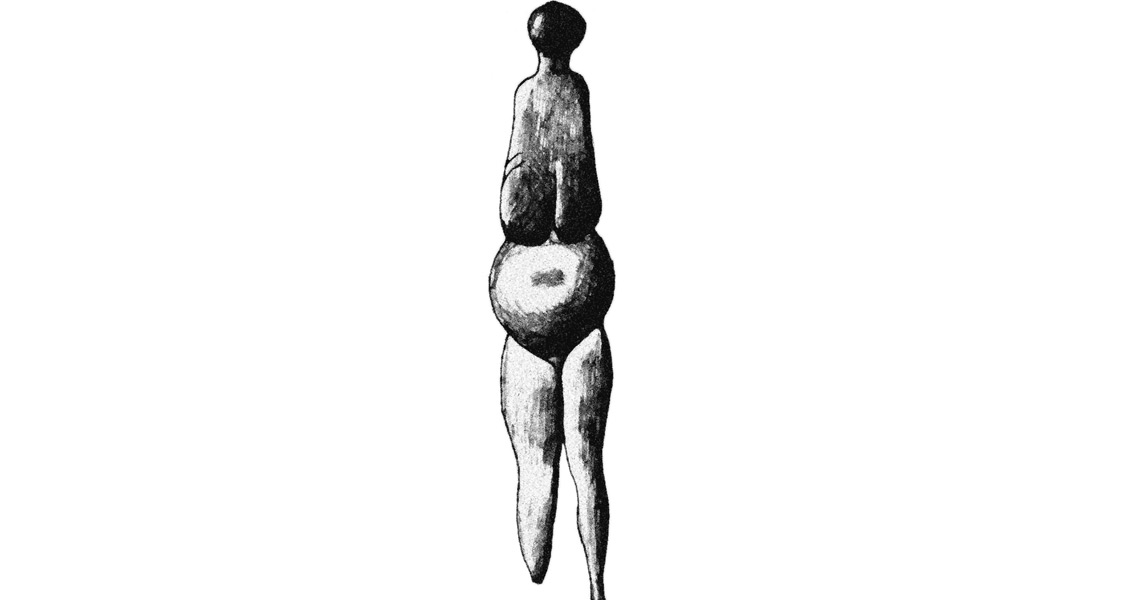<![CDATA[They’re known as the Venus figurines of Mal’ta - a much celebrated group of prehistoric statuettes, originally discovered at the Angara River in Mal’ta, close to Lake Baikal in Irkutsk Oblast, Siberia in the 1920’s and 1950’s. Now, new and groundbreaking research reveals the 20,000-year-old carvings do not represent the idealized female figure associated with Venus at all, but are actually a collection of carvings depicting every day, ordinary prehistoric people. Researchers using microscopes and macro shooting have now determined the figures depict Paleolithic people of all ages and both genders. Several figurines, carved from woolly mammoth tusk and notable for their feminine features, were already known to be clothed and are referred to, charmingly, as the Venus in Furs figurines. Dressed for protection against the Siberian winter, they are possibly the oldest known depictions in the world of sewn fur clothing. The Mal'ta - Buret' tradition is from a large area which spans west of Lake Baikal and the Yenisey River. The site of Mal'ta is comprised of subterranean houses which were made from reindeer antlers and large animal bones probably covered with sod and animal skins in order to protect the occupants from the prevailing and severe northerly winds. The artistic accomplishments discovered at Mal’ta included carved ivory, bone, and antler objects. But now, a new study using modern technology has been conducted by Dr. Lyudmila Lbova and Dr. Pavel Volkov, a trace analysis specialist. Most notably, the research challenges the belief that several of the statuettes are nude. Dr. Lbova told the Siberian Times, “There were many attempts to understand the idea of these figurines, and their symbolism. And there were many interpretations. We decided to pay more attention to some material things, to study the surface, to understand how these figurines were made. Modern equipment allows a lot of opportunities to undertake such a study. Totally there are 39 or 40 known figurines found both on Mal'ta and Buret: we have (so far) studied 29 of them, using microscopes and macro shooting.” The researchers worked with carvings from the collections held by the State Hermitage Museum in St Petersburg, Russia. They discovered some of the figurines were just works in progress while others were finished. The works in progress allowed researchers to reconstruct the steps of their creation. The unexpected find was the traces on the surface, previously undetectable with the naked eye, which showed details of clothing; bags, bracelets, shoes, hats, and back packs: Images of the people as they lived 20,000 years ago. The researchers discovered that all the figurines were “dressed” more or less, with various hairstyles and hats, accessories and shoes, all depicted with very thin lines. The ancient carvers went so far as to use different techniques to indicate different materials, such as decorations, leather, and fur. Realistic elements matched the traditional outerwear worn by Nordic peoples. The most common items of clothing on the carvings were fur overalls – much like the ‘kerkery typically worn by Koryal women and children in far east Siberia. In the group of Mal’ta figurines the overalls are typically found on the small figurines (2cm to 4 cm high) depicting children. Additionally, all the carvings with overalls have an excessively large head, proportions commonly seen in depictions of children less than five years old. Even more interesting were the hairstyles, hats and fur helmets, including a hat that would have covered the head, ears, cheeks, chin and neck, and in one case a high roll like a closed collar or fur scarf found under the chin. On a statuette with proportions indicating a teenager, the tests showed a backpack which had two straps. All of the statuettes were discovered in the living quarters of ancient settlements, some in what are believed to have been ritual locations in the home. There’s no clear reason as to why the figures were made, but the new findings indicate they were likely based on real people, possibly relatives, and are not images of an abstract goddess – like Venus. The research was done by the Laboratory 'Interdisciplinary Study of Primitive Art of Eurasia', in a joint project with Novosibirsk State University's Institute of Archaeology and Ethnography and University of Bordeaux. Several of these carvings are currently on display at the Hermitage Museum in Saint Petersburg, Russia. ]]>
Venus of Mal’ta Statuettes More Human Than Godly
